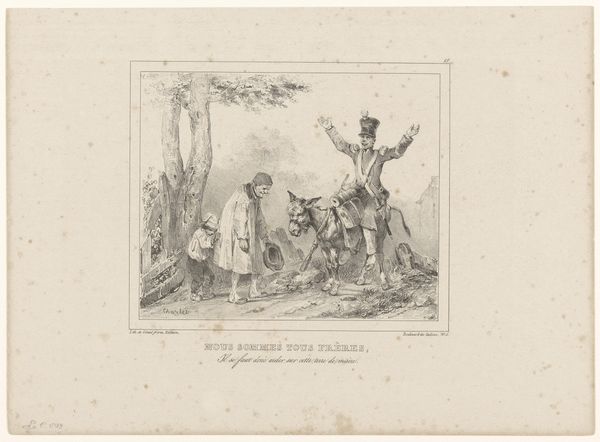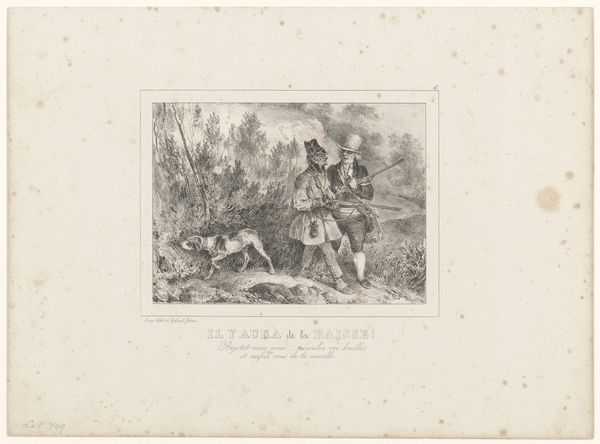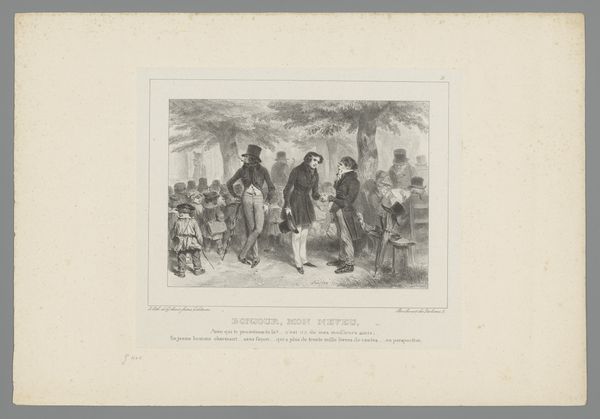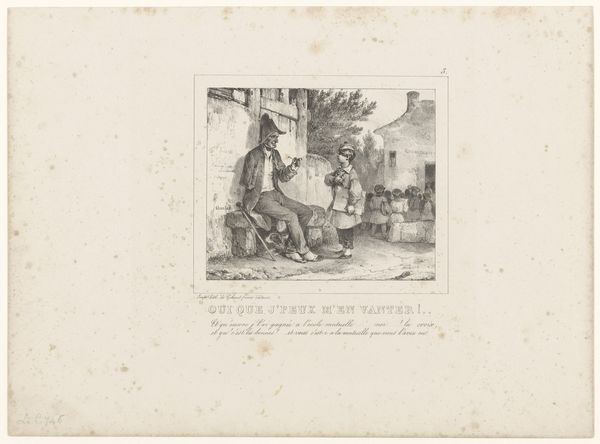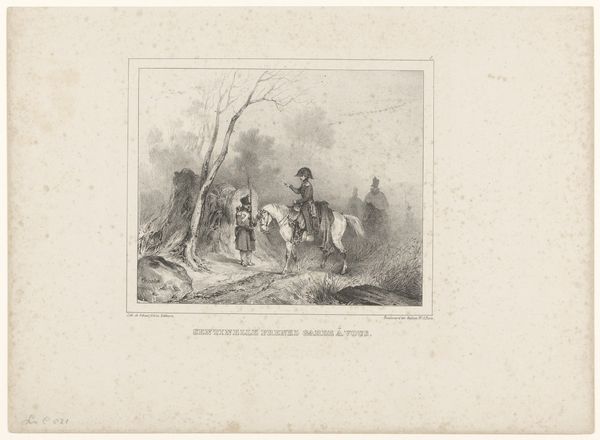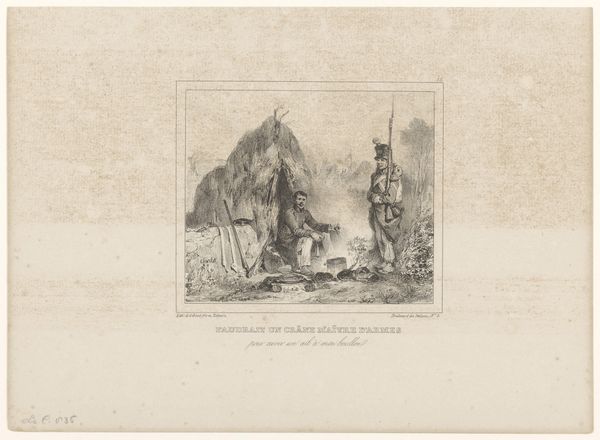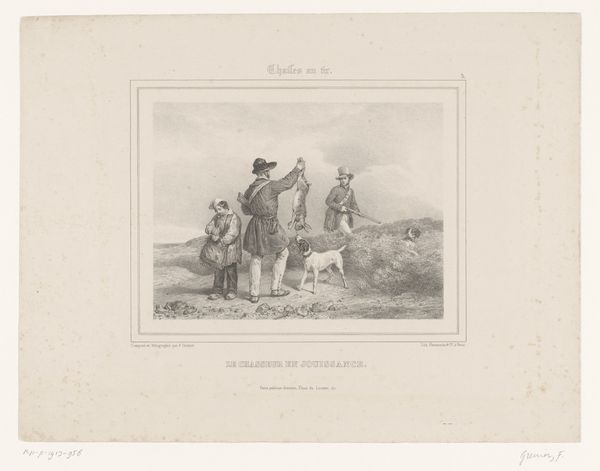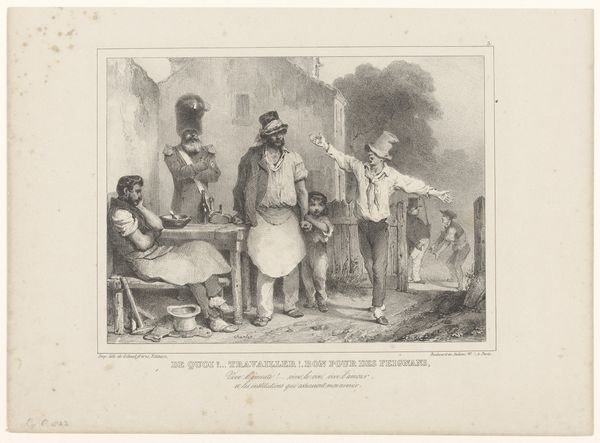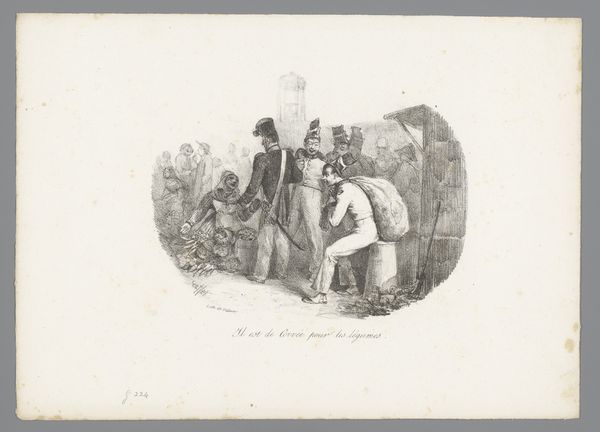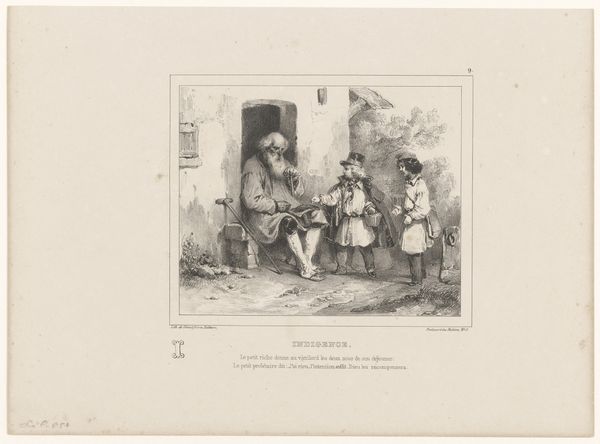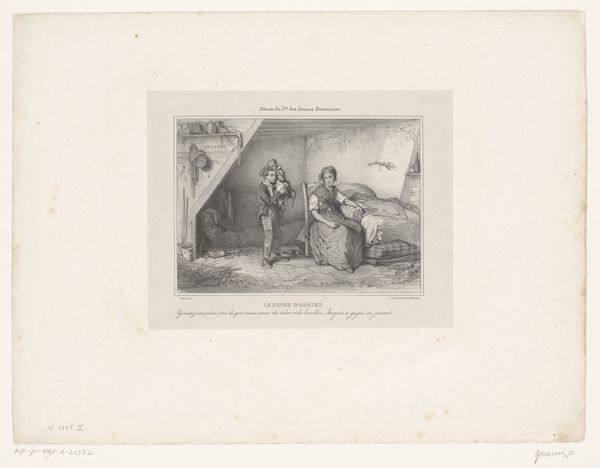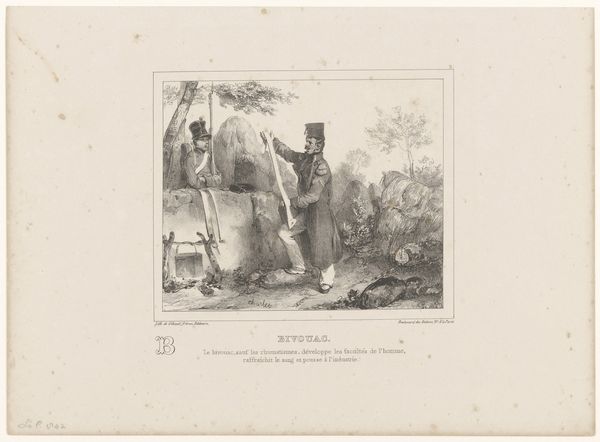
drawing, lithograph, print, engraving
#
portrait
#
drawing
#
narrative-art
#
lithograph
# print
#
pencil sketch
#
light coloured
#
old engraving style
#
figuration
#
archive photography
#
romanticism
#
history-painting
#
engraving
Dimensions: height 243 mm, width 280 mm
Copyright: Rijks Museum: Open Domain
Curator: This lithograph, created by Nicolas Toussaint Charlet in 1837, is titled "Valentin wordt toegesproken door Bronzard." It's currently housed here at the Rijksmuseum. Editor: The first thing that strikes me is the despondency radiating from the seated figure. The scene feels charged with unspoken accusations. Curator: Charlet was deeply engaged with Romanticism and its fascination with the individual psyche, and we see this reflected in the dramatized emotion. But the social context is key: this piece was created during a period of great upheaval in France, marked by political instability and a yearning for a return to Napoleonic glory. Editor: Tell me more about the interplay between the two figures. It seems like there are obvious power dynamics. Curator: Bronzard, the standing grenadier, projects an aura of military authority. He gestures forcefully, seemingly directing Valentin. There is clearly a didactic quality about it; an admonishment by a superior. Editor: What’s striking is how casually their conflict plays out in an idyllic exterior: trees in full leaf, an elegant garden urn... a disconnect between setting and sentiment. Curator: Absolutely, the idealized backdrop emphasizes the personal struggle of Valentin within the broader socio-political narrative. Considering Charlet's biography, and particularly how he lived through many political shifts and even fought in the Napoleonic wars himself, one could suggest this is about how shifting societal ideals place pressures on individual identity. The romantic, sentimental landscape stands as silent witness to Valentin’s interior and societal conflict. Editor: Right, it highlights the internal turmoil by contrasting it with an ordered public façade. I also wonder about accessibility—lithographs were relatively affordable and could circulate widely. I'm guessing it was less about an elite patron's vision and more about wider political discourse. Curator: Precisely, the print medium underscores Charlet’s aim to engage with and shape public sentiment on pressing contemporary questions about nationhood and its consequences. The positioning of individual feeling against national military values creates this sense of discourse that the artist is provoking through circulation. Editor: Looking at it again, I am intrigued by the detail in rendering the figures' attire, juxtaposed with looser sketched surroundings that do seem to create this accessible perspective of public exchange. Curator: Indeed, focusing on this work from the period draws a dialogue between the individual, represented by emotion, and broader cultural conversations about nationhood, defeat and the burdens of cultural pride and conflict.
Comments
No comments
Be the first to comment and join the conversation on the ultimate creative platform.
